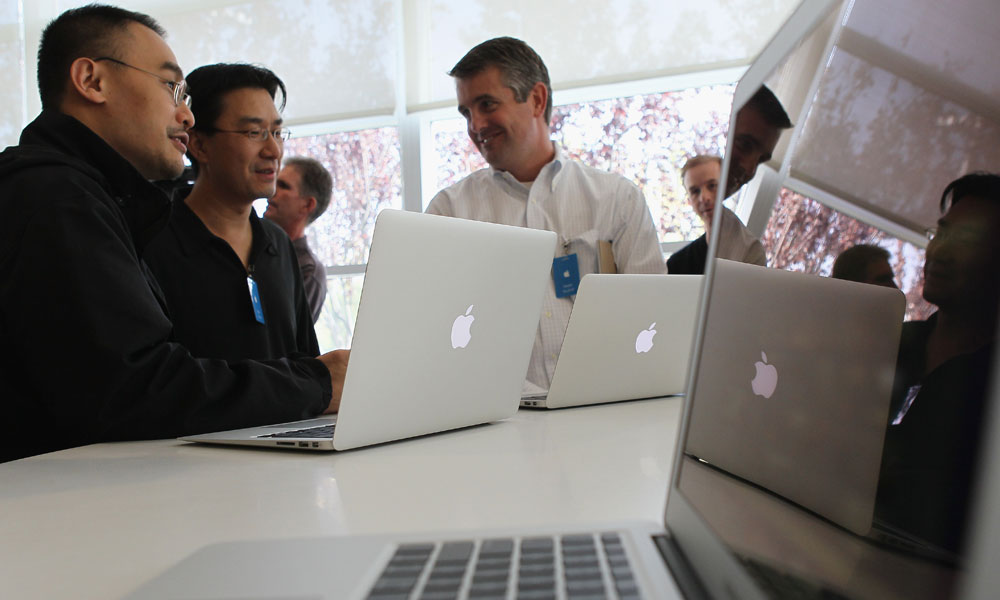
The Mac’s Enterprise Growth: Proof That User Choice Is Winning Out
A recent study suggests that Apple's operating systems are starting to make headway with enterprise customers. But the interesting thing is why they are—because users are clamoring for them. The lesson for IT staffs is all about flexibility.
Recently, I had a pretty annoying problem with my trusty do-everything MacBook Pro: The wireless started konking out.
Knowing enough about the issue that I could largely diagnose it myself, I thought it was a hardware problem. The guy checking it out at the Genius Bar wasn’t so sure. We spent half an hour debating whether the culprit was software or hardware. All the problems I was having (of course) weren’t immediately showing up for the guy, and despite my accurately pointing out the WiFi wasn’t working at all in recovery mode, he thought I needed to format my hard drive to fix it. I didn’t have my external drive on me.
So I left, problem unsolved, eventually buying a WiFi adapter as a backup while I kept putting off the fix I needed.
Last week, I finally got it fixed at a different Apple Store with a more helpful Genius. It was a hardware problem, and by that point, the Bluetooth had started to go, too. (Way to listen, First Genius.)
Increasingly, workers don’t want to be forced to use a computer they don’t want to live with anymore.
Easy to Use, Hard to Fix
The whole saga, annoying as it was, makes me totally understand why most IT professionals surveyed in a recent VMware study said that Macs aren’t easier to maintain than PCs. Your software may crash less often and you can keep it on without rebooting for three months without an issue, but when the hardware falters, it falters badly.
But here’s the interesting thing: Macs are starting to become the norm in offices big and small. The study found that two-thirds of the businesses surveyed had at least some users on Macs. And more important, the driving force behind the growth of Apple’s platform appears to be users, not corporate needs. Of the companies officially or unofficially supporting Macs, 73 percent cited “user preference” as the main reason, with top-down IT issues such as “less maintenance,” “executive mandate,” and “security advantages” taking a backseat to what users want. (Those three issues scored less than 25 percent of responses, each—on a question that let respondents pick up to three reasons. Think about that.)
Users who picked Mac had various reasons—cool factor, ease of use, nicer screens—but the point is pretty clear: Increasingly, workers don’t want to be forced to use a computer they don’t want to live with anymore.
Now VMware, which sells virtualization software, suggests that the solution to this issue might be to build stronger virtualization options for staffers so they can use whatever operating system they want. But setting aside the company’s commercial interest, the survey nonetheless hit on an issue that should be on IT staffers’ radar: If you haven’t already, now may be the time to make room for Mac.
BYOD? More Like UYFOS
Admittedly, I’m biased in my choice of systems. I’m firmly in the Mac camp, having owned one model or another for more than a decade. That said, I think the VMware study shows that the enterprise is becoming a place where it matters less what operating system we use and more that everything works well together.
I’ve touched on this basic point in different ways in the past, and I realize it’s not an easy argument to make in some offices. But ultimately, it’s more important that we’re able to talk to one another than it is that we’re all on the same operating system.
A decade ago, this argument would have been a no-go. At the time, the web was young, enterprise software was still better served up in a desktop app than a web browser, and the cloud was some thing up in the sky. Oh, and good luck finding a phone with a useful touchscreen in 2004.
But things are changing, and ultimately users are starting to win the argument that their workflows matter more to the bottom line than a rigid approach. All the stuff we have now that we didn’t have then—responsive design, cloud storage, software-as-a-service platforms—makes the idea feasible. Finally.
So maybe that’s where we’re going. It’s not just about “bring your own device” (BYOD) anymore. Maybe IT has to embrace “use your favorite operating system” (UYFOS). Sure, it can lead to headaches—repairing a MacBook Pro is not for the faint of heart—but the productivity gains might make it worthwhile.
Just make sure it can load up a web browser and an email client, OK?
(photo by Justin Sullivan/Getty Images)






Comments